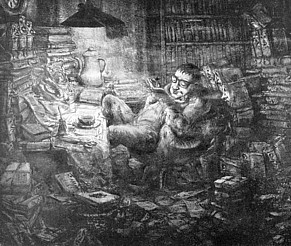
|
Neil Gregor, Haunted City: Nuremberg and the Nazi Past (New Haven: Yale University Press, 2008)
in: American Historical Review (Oct. 2010),
|
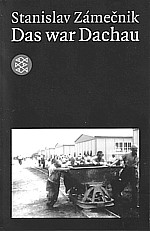
|
Stanislav Zámecnik, Das war Dachau
(Frankfurt: Fischer, 2007)
in: American Historical Review (Feb. 2008),
|
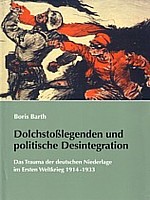 |
Boris
Barth,
Dolchstosslegenden und politische Desintegration:
Das Trauma der deutschen Niederlage im Ersten Weltkrieg, 1914-1933
(Düsseldorf: Droste, 2003)
in: H-Net Reviews (Dec. 2006); H-German email, Dec. 4, 2006
|
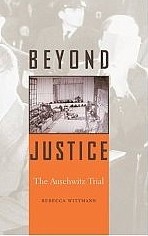
|
Rebecca
Wittmann,
Beyond Justice: The Auschwitz Trial
(Cambridge,
MA: Harvard U.P., 2005)
in: American Historical Review (forthcoming 2006), pp.
- text of 2006 Wittmann review
 [with
substantial additional discussion of Devin Pendas, The Frankfurt
Auschwitz Trial, 1963-1965 (Cambridge, 2006)] [with
substantial additional discussion of Devin Pendas, The Frankfurt
Auschwitz Trial, 1963-1965 (Cambridge, 2006)]
- note 9/25/06: most of body text removed pending print publication
in the AHR
|
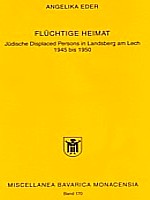
|
Angelika
Eder,
Flüchtige Heimat: Jüdische Displaced Persons in Landsberg
am Lech, 1945 bis 1950
(Munich, 2001)
in: Archiv für Sozialgeschichte 42(2002), pp. 615-616
|

|
Michael
Wolffsohn,
Die
Deutschland-Akte: Juden und Deutsche in Ost und West,
in: German Studies Review 20:2(May 1997), 369f.
|
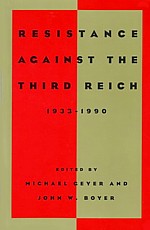
|
John
Boyer and Michael Geyer (eds.),
Resistance against the Third Reich, 1933- 1990,
in: Journal of Modern History 68:1(March 1996), 249- 51.
- review without notes.
- One assertion is noted in a June
26, 2004 article about the 20 July 1944 movement is noted
in the Belgian newspaper La Libre:
"Le débat sur les motivations, en tout cas, n'est
pas près de s'épuiser. Le professeur Harold Marcuse
(Université de Californie) y est entré, déboulonnant
la statue de Stauffenberg parce qu'il n'eut pas pour principal
objectif de «sauver des Juifs». Son fils Franz Ludwig,
66 ans, a déclaré pour sa part au «Süddeutsche
Zeitung» que son père et ses compagnons voulaient
«stabiliser le pays et mettre fin à la guerre»
et que les accusations d'antisémitisme portées contre
eux sont «absurdes». L'historien allemand Joachim
Fest confirme pour sa part que la révolte du colonel contre
le régime national-socialiste commença dès
1938 et était inspirée par des critères moraux
et religieux. Le passage à l'action clandestine se fit
en 1942."
|
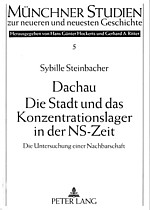
|
Sybille
Steinbacher,
Dachau: Die Stadt und das Konzentrationslager in der NS-Zeit
(Peter Lang, 1993, 1994),
reviewed for: Archiv für Sozialgeschichte 36(1996),
777-9.
|
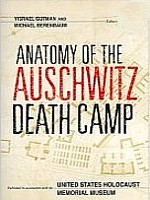
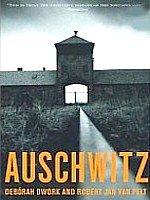
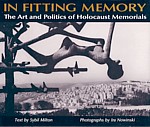
|
"Architecture
and Auschwitz," in: Journal of Architectural Education
49:2(Nov. 1995), 123-8.
- text of review essay, without notes; PDF of original
- review of five books:
- Anatomy of the Auschwitz Death Camp
Yisrael Gutman and Michael Berenbaum,
editors
Indiana University Press, 1994
638pp., ca. 55 drawings and photographs $39.95
- Auschwitz, 1270-1995 (provisional
title)
Deborah Dwork and Robert-Jan van Pelt
W.W. Norton, forthcoming 1995
ca. 400pp., ca. 200 illustrations
- In Fitting Memory: The Art and Politics of Holocaust
Memorials
Sybil Milton and Ira Nowinski
Wayne State University Press, 1991
341pp., 135 back and white plates $*** (cloth)
- The Texture of Memory: Holocaust Memorials and Meaning
James E. Young
Yale University Press, 1993
398 pp., numerous illustrations
$40.00 (cloth), $20.00 (paper)
- The Art of Memory
 :
Holocaust Memorials in History :
Holocaust Memorials in History
James E. Young, editor
The Jewish Museum, New York, 1994
194 pp., numerous black and white and 28 color illustrations
$32.00
- Journal of
Architectural Education website
|
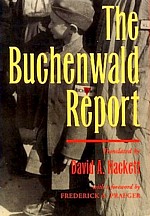
|
The Buchenwald
Report,
ed. by David Hackett,
in: H-German, H-Net Reviews, Oct. 13, 1995
|
|
page created Nov. 1997 (web
archive since Dec. 1998), last updated: see page header
to Harold Marcuse homepage,
Publications page
|
